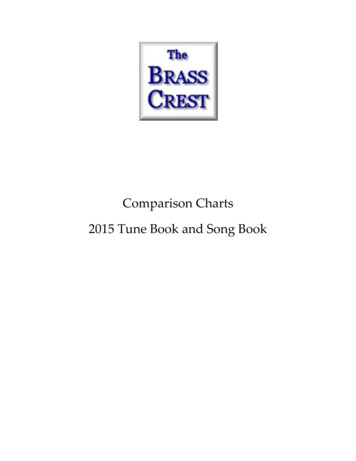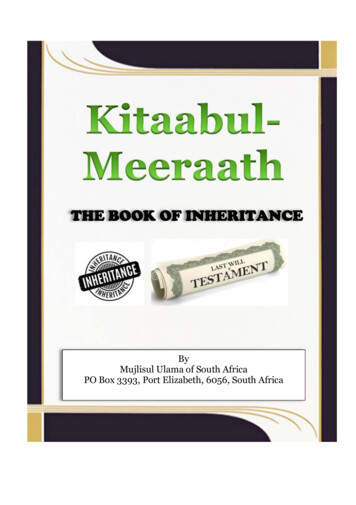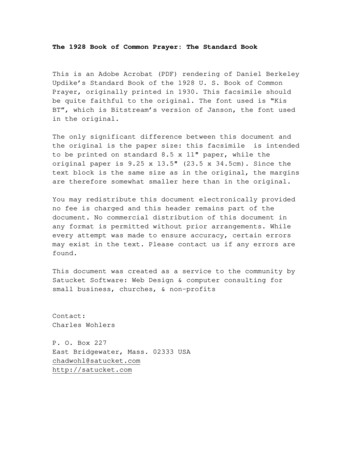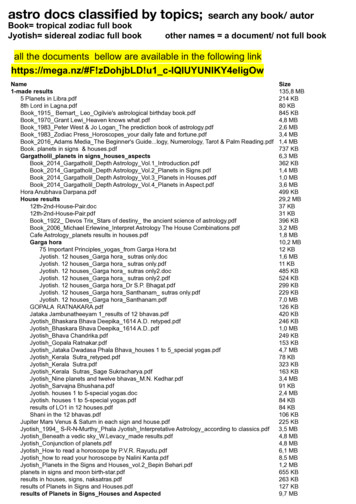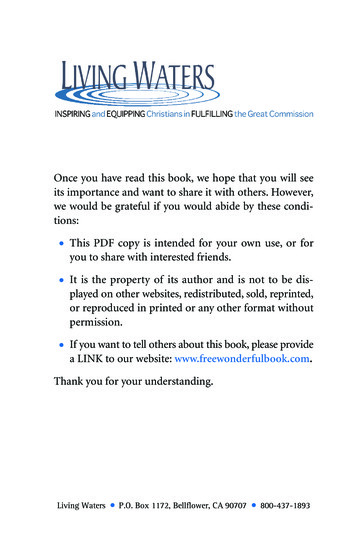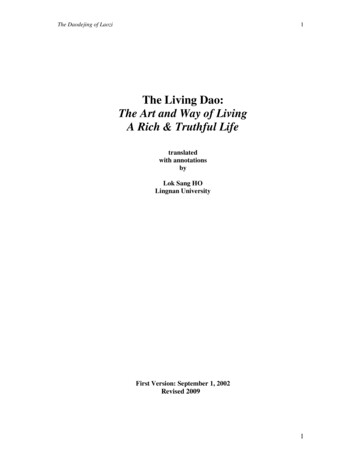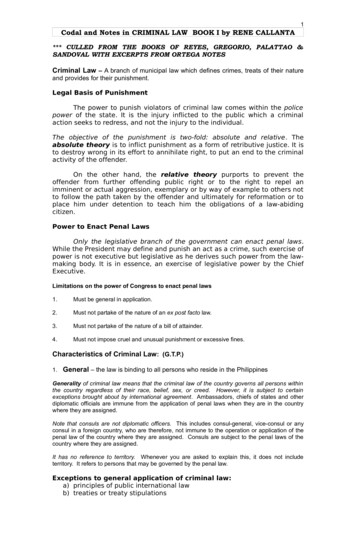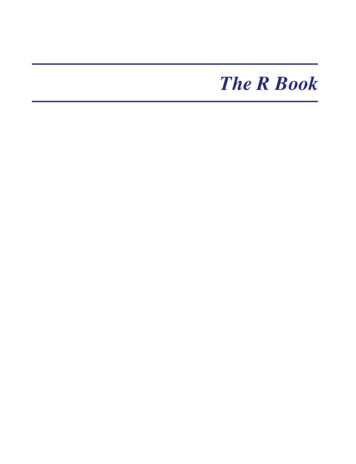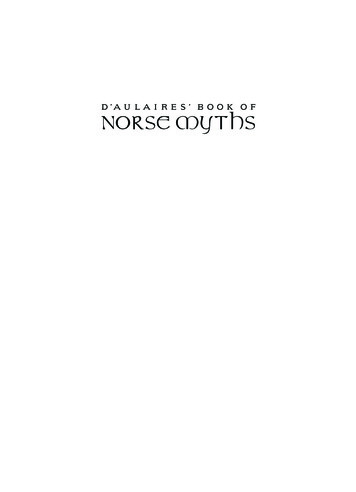
Transcription
D ’A U L A I R E S ’ B O O K O FNORSE MYTHS
D ’A U L A I R E S ’ B O O K O FN O R S EM YT H Sby INGRI and EDGAR PARIN D’AULAIREP R E F A C EB YM I C H A E LC H A B O Nthe new york review children’s collectionnew york
The authors are grateful for the assistance of Odd Nordland, Assistant Professor at the Institutefor Nordic Languages and Literature at Oslo University, Oslo, Norway.T H I S IS A NEW YORK REVIEW BOOKPU B L I SH E D BY THE NEW YORK REVIEW OF BOOKSCopyright 1967 by Ingri and Edgar Parin d’AulaireAll rights reserved.Originally published as Norse Gods and GiantsPublished in the United States of America byThe New York Review of Books1755 Broadway, New York, NY 10019www.nyrb.comLibrary of Congress Cataloging-in-Publication Datad’Aulaire, Ingri, 1904–[Norse gods and giants]d’Aulaires’ Book of Norse myths / Ingri and Edgar Parin d’Aulaire.p. cm. — (New York Review children’s collection)Originally published: Norse gods and giants. Garden City, N.Y. : Doubleday, 1967.ISBN 1-59017-125-X (alk. paper)1. Gods, Norse—Juvenile literature. 2. Mythology, Norse—Juvenile literature. 3. Giants—Mythology—Juvenileliterature. I. Title: Book of Norse myths. II. d’Aulaire, Edgar Parin, 1898– III. Title. IV. Series.BL860.D355 2005293'.13—dc222004029214Jacket design by Louise Fili Ltd.This book is printed on acid-free paper.Manufactured in China by P. Chan & Edward, Inc.1 3 5 7 9 10 8 6 4 2Distributed to the trade by Publishers Group West
PrefaceI was in the third grade when I first read this book, and already sufferingthe changes, the horns, wings, and tusks that grow on your imaginationwhen you thrive on a steady diet of myths and fairy tales. I had read itspredecessor, d’Aulaires’ Book of Greek Myths (1961), and I knew my Old Testament pretty well, from the Creation more or less down to Ruth. There wasrape and murder in those other books, revenge, cannibalism, folly, madness,incest, and deceit. And I thought all that was great stuff. (Maybe that sayssomething about me, or about eight-year-old boys generally. I don’t reallycare either way.) Joseph’s brothers, enslaving him to some Ishmaelites andthen soaking his florid coat in animal blood to horrify their father: greatstuff. Orpheus’ head, torn off by a raving pack of women, continuing tosing as it floats down the Hebrus River to the sea: that was great stuff, too.Every splendor in those tales had its shadow; every blessing its curse. Inthose shadows and curses I first encountered the primal darkness of theworld, in some of our earliest attempts to explain and understand it.I was drawn to that darkness. I was repelled by it, too, but as the storieswere presented I knew that I was supposed to be only repelled by the darkness and also, somehow, to blame myself for it. Doom and decay, crime andfolly, sin and punishment, the imperative to work and sweat and struggleand suffer the Furies, these had entered the world with humankind: webrought them on ourselves. In the Bible it had all started out with a happycouple in the Garden of Eden; in the Greek myths, after a brief eon ofdivine patricide and child-devouring and a couple of wars in Heaven, therecame a long and peaceful Golden Age. In both cases, we were meant tounderstand, the world had begun with light and been spoiled. Thousandsof years of moralizers, preceptors, dramatists, hypocrites, and scolds hadbeen at work on this material, with their dogma, and their hangups, andtheir refined sense of tragedy. The original darkness was still there in thestories, and it was still very dark indeed. But it had been engineered, likea fetid swamp by the Army Corps, rationalized, bricked up, rechanneled,given a dazzling white coat of cement. It had been turned to the advantageof people trying to make a point to recalcitrant listeners. What remainedix
xwas a darkness that, while you recognized it in your own heart, obliged youat the same to recognize its disadvantage, its impoliteness, its unacceptability, its being wrong, particularly for eight-year-old boys.In the world of the Northmen, it was a different story.As the d’Aulaires told it, in this follow-up volume to their Book of GreekMyths (originally titled Norse Gods and Giants), there was something in Scandinavian mythology that went beyond the straightforward appeal of violence,monstrosity, feats of arms, sibling rivalry, and ripping yarns. Here the darkness was not solely the fault of humans, the inevitable product of theirunfitness, their inherent inferiority to a God or gods who—quite cruelly,under the circumstances—had created them.The world of Norse gods and men and giants, which the d’Aulairesdepicted, in a stunning series of lithographs, with such loving and whimsical and brutal delicacy, begins in darkness, and ends in darkness, andis veined like a fire with darkness that forks and branches. It is a worldconjured against darkness, in its lee, so to speak; around a fire, in a camp atthe edges of a continent-sized forest, under a sky black with snow clouds,with nothing to the north but nothingness and flickering ice. It assumesdarkness, and its only conclusion is darkness (apart from a transparentlytacked-on post-Christian postlude). Those veins of calamity and violenceand ruin that structure it, like the forking of a fire or of the plot of a story,serve to make more vivid the magical glint of goodness that light and colorrepresent. (Everything that is beautiful, in the Norse world, is somethingthat glints: sparks from ringing hammers, stars, gold and gems, the Auroraborealis, tooled swords and helmets and armbands, fire, a woman’s hair,wine and mead in a golden cup.) Here the gods themselves are no betteror worse, in the moral sense, than humans. They have the glint of courage,of truthfulness, loyalty, wit, and in them maybe it shines a little brighter,as their darkness throws deeper shadows. The morality encoded in thesestories is a fundamental one of hospitality and revenge, gift-giving and lifetaking, oaths sworn, dooms pronounced, cruel and unforgettable pranks.Moreover (and to my eight-year-old imagination this more than anythingendeared them to me) the Norse gods are mortal. Sure, you probably knewthat already, but think about it again for a minute or two. Mortal gods. Godswhose flaws of character—pride, unfaithfulness, cruelty, deception, seduction—while no worse than those of Jehovah or the Olympians, will one day,and they know this, prove their undoing.
Great stuff. Start anywhere; start with Odin. First he murders thegigantic, hideous monster who whelped his father, and slaughters him tomake the universe. Then he plucks out his own right eyeball and trades it toan ice giant for a sip—a sip!—of water from the well of secret knowledge.Next he hangs himself, from a tree, for nine days and nine nights, and in atrance of divine asphyxia devises the runes. Then he opens a vein in his armand lets his blood commingle with that of the worst (and most appealing)creature who ever lived, thus setting in motion the chain of events that willlead to the extinction of himself, everyone he loves, and all the nine worlds(beautifully mapped on the book’s endpapers) that he himself once shapedfrom the skull, lungs, heart, bones, teeth, and blood of his grandfather.The d’Aulaires capture all of this, reporting it in a straightforward,fustian-free, magical-realist prose that never stops to shake its head or gapeat marvels and freaks and disasters, making them seem somehow all thestranger, and more believable. Their spectacular and quirky illustrations (apair of adjectives appropriate to few illustrators that I can think of offhand)never found a more appropriate subject than the Norse world, with its oddblend of gorgeousness and violence, its wild prodigies and grim humor.What makes the book such a powerful feat of visual storytelling is the wayin which the prose and the pictures (reflecting, perhaps, the marriage andlifelong partnership of the authors) complement each other, advance eachother’s agenda. Almost every page that is not taken up by a giant burstinglithograph of stars and monsters is ornamented, with a smaller drawing, orwith one of the curious, cryptic, twisted little margin-men, those humancurlicues of fire, that so disquieted me as a kid and continue, to this day, tofreak out and delight my own kids. Through this intricate gallery of marvelsand filigree the text walks with calm assurance, gazing calmly into everyabyss, letting the art do the work of bedazzlement while seeing to it thatthe remarkable facts—the powers and shortcomings of Mjolnir the mightyhammer, the strange parentage of Sleipnir, Odin’s eight-legged steed—arelaid bare. This simultaneous effect of wonderment and acceptance, thisdoubled strength, allows the d’Aulaires to balance their recreation of theNorse world exactly on its point of greatest intensity: the figure of Loki.Ally and enemy, genius and failure; delightful and despicable, ridiculous and deadly, beautiful and hideous, hilarious and bitter, clever andfoolish, Loki is the God of Nothing in Particular yet unmistakably of theambiguous World Itself. It was in reading this book that I first felt the powerxi
xiiof that ambiguity. Loki never turned up among the lists of Great LiteraryHeroes (or Villains) of Childhood, and yet he was my favorite characterin the book that was for many years my favorite, a book whose subtitlemight have been How Loki Ruined the World and Made It Worth Talking About.Loki was the god of my own mind as a child, with its competing impulsesof vandalism and vision, of imagining things and smashing them. And ashe cooked up schemes and foiled them, fathered monsters and stymiedthem, helped forestall the end of things and hastened it, he was god of theendlessly complicating nature of plot, of storytelling itself.I grew up in a time of mortal gods who knew, like Odin, that the worldof marvels they had created was on the verge, through their own faithlessness and might, of Ragnarokk, a time when the best impulses of men andthe worst were laid bare in Mississippi and Vietnam, when the suburbanMidgard where I grew up was threatened—or so we were told—by frostgiants and fire-giants sworn to destroy it. And I guess I saw all of thatreflected in this book. But if those parallels were there, then so was Loki,and not merely in his treachery and his urge to scheme and spoil. Loki wasfunny—he made the other gods laugh. In his fickleness and his fertile imagination he even brought pleasure to Odin, who with all his well-sipping andauto-asphyxiation knew too much ever to be otherwise amused. This was, infact, the reason why Odin had taken the great, foredoomed step of makingLoki his blood brother—for the pleasure, pure and simple, of his company.Loki was the god of the irresistible gag, the gratuitous punchline, the improvised, half-baked solution—the God of the Eight-Year-Old Boy—and likeall great jokers and improvisers, as often the butt and the perpetrator of hisgreatest stunts.In the end, it was not the familiar darkness of the universe and ofmy human heart that bound me forever to this book and the nine worldsit contained. It was the bright thread of silliness, of mockery and selfmockery, of gods forced (repeatedly) to dress as women, and submit tothe amorous attentions of stallions, and wrestle old ladies. The d’Aulaires’heterogeneous drawings catch hold precisely of that thread: they are neoRaphaelite friezes as cartooned by Popeye’s Elsie Segar, at once grandioseand goofy, in a way that reflects both the Norse universe—which begins,after all, with a cow, a great world-sized heifer, patiently, obsessively lickingat a salty patch in the primal stew—and my own.
We all grew up—all of us, from the beginning—in a time of violenceand invention, absurdity and Armageddon, prey and witness to the worstand the best in humanity, in a world ruined and made interesting by Loki.I took comfort, as a kid, in knowing that things had always been as awfuland as wonderful as they were now, that the world was always on the edgeof total destruction, even if, in Maryland in 1969, as today, it seemed a littlemore true than usual.M IC H A E L C H A BONxiii
D ’A U L A I R E S ’ B O O K O FNORSE MYTHS
I N G R I M O RT E N S O N and E D G A R PA R I N D ’ AU L A I R E met at artschool in Munich in 1921. Edgar’s father was a noted Italian portraitpainter, his mother a Parisian. Ingri, the youngest of five children, tracedher lineage back to the Viking kings.The couple married in Norway, then moved to Paris. As Bohemianartists, they often talked about emigrating to America. “The enormouscontinent with all its possibilities and grandeur caught our imagination,”Edgar later recalled.A small payment from a bus accident provided the means. Edgar sailedalone to New York where he earned enough by illustrating books to buypassage for his wife. Once there, Ingri painted portraits and hosted modestdinner parties. The head librarian of the New York Public Library’s juvenile department attended one of those. Why, she asked, didn’t they createpicture books for children?The d’Aulaires published their first children’s book in 1931. Next camethree books steeped in the Scandinavian folklore of Ingri’s childhood. Thenthe couple turned their talents to the history of their new country. Theresult was a series of beautifully illustrated books about American heroes,one of which, Abraham Lincoln, won the d’Aulaires the American LibraryAssociation’s Caldecott Medal. Finally they turned to the realm of myths.The d’Aulaires worked as a team on both art and text throughout theirjoint career. Originally, they used stone lithography for their illustrations.A single four-color illustration required four slabs of Bavarian limestonethat weighed up to two hundred pounds apiece. The technique gave theirillustrations an uncanny hand-drawn vibrancy. When, in the early 1960s,this process became too expensive, the d’Aulaires switched to acetate sheetswhich closely approximated the texture of lithographic stone.In their nearly five-decade career, the d’Aulaires received high critical acclaim for their distinguished contributions to children’s literature.They were working on a new book when Ingri died in 1980 at the age ofseventy-five. Edgar continued working until he died in 1985 at the age ofeighty-six.
T I T L E S I N T H E N E W YO R K R E V I E WCHILDREN’S COLLECTIONE S T H E R AV E R I L LJenny and the Cat ClubE S T H E R AV E R I L LJenny’s Birthday BookE S T H E R AV E R I L LJenny Goes to SeaD I N O BU Z Z AT IThe Bears’ Famous Invasion of SicilyI N G R I A N D E D G A R PA R I N D ’ AU L A I R Ed’Aulaires’ Book of Norse MythsEILÍS DILLONThe Island of HorsesE L E A N O R FA R J E O NThe Little BookroomRU M E R G O D D E NAn Episode of SparrowsN O R M A N L I N D S AYThe Magic PuddingE R I C L I N K L AT E RThe Wind on the MoonBA R BA R A S L E I G HCarbonel: The King of the CatsT. H. W H I T EMistress Masham’s ReposeREINER ZIMNIKThe Crane
when you thrive on a steady diet of myths and fairy tales. I had read its predecessor, d’Aulaires’ Book of Greek Myths (1961), and I knew my Old Testa-ment pretty well, from the Creation
